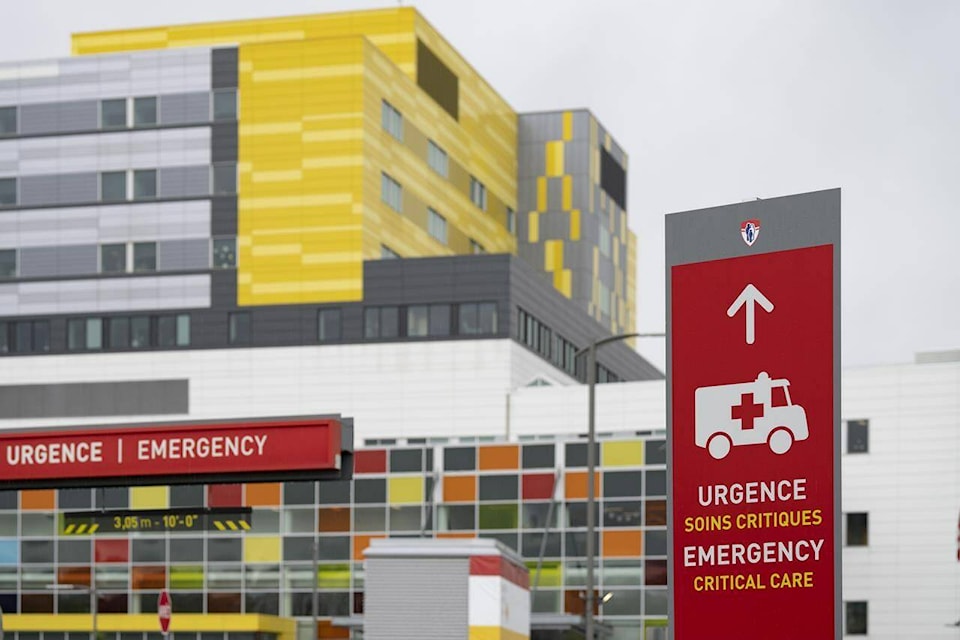MaryAnn Bradley was bracing herself for a heart disease diagnosis when her cardiologist told her an X-ray showed a shadow on her right lung.
���߲��о����I just thought I was going to die. That was it,���߲��о���� she said.
Bradley, now 68, had been pushing doctors to find out what was behind an unrelenting pain in the left side of her neck.
The St. Catharines, Ont., woman was ���߲��о����completely devastated���߲��о���� to learn she had stage 1 lung cancer, especially because her father had died of the disease years before.
A few weeks later, a thoracic surgeon removed the tumour.
���߲��о����Everything went fantastically well,���߲��о���� Bradley said.
She���߲��о����s been cancer-free for 10 years now, and goes back for CT scans to make sure it���߲��о����s caught early if it ever returns.
���߲��о����I had a great recovery and I���߲��о����ve never looked back,���߲��о���� said Bradley, who now advocates for early detection of lung cancer and volunteers with Lung Cancer Canada as a peer mentor for others who get the diagnosis.
An annual report on cancer statistics released Wednesday says more people with lung cancer are surviving like Bradley.
Lung cancer death rates are declining faster than any other type of cancer in this country, according to Canadian Cancer Statistics 2023, which is compiled by the Canadian Cancer Statistics Advisory Committee, along with the Canadian Cancer Society, Statistics Canada and the Public Health Agency of Canada.
Lung cancer death rates have decreased by 4.3 per cent per year since 2014 for males and 4.1 per cent per year since 2016 for females, the report says.
���߲��о����To me, this finding really highlights the progress that has been made in reducing lung cancer incidence through commercial tobacco control,���߲��о���� said Jennifer Gillis, an epidemiologist in Vancouver and senior manager of surveillance at the Canadian Cancer Society.
According to the cancer society, smoking tobacco is a factor in about 72 per cent of lung cancer deaths.
As of 2021, about 11.8 per cent of people age 12 and older in Canada smoked, Statistics Canada says.
The Canadian Cancer Society aims to reduce the smoking rate to five per cent by 2035, estimating it could prevent more than 50,000 cancer cases.
Other risk factors that can increase someone���߲��о����s risk for lung cancer include radon gas, asbestos and air pollution, it said.
More research is also needed on e-cigarettes and vaping to determine the long-term effects of the chemicals they contain, the report said.
In addition to cutting down smoking rates, the report reflects progress in early screening and advances in treatment options, Gillis said.
���߲��о����We���߲��о����re really improving outcomes for people who have been diagnosed and are affected by lung cancer,���߲��о���� she said.
But despite the progress made, lung cancer is still responsible for about one in four cancer deaths in Canada, and remains the leading cause of cancer mortality, the report said.
The report estimates 20,600 people in Canada are expected to die from lung cancer in 2023.
Statistics Canada estimates lung cancer survival rates are 62 per cent for people diagnosed at stage 1, and 39 per cent at stage 2. That drops to 16 per cent at stage 3 and three per cent at stage 4.
The report says colorectal cancer is expected to be the second leading cause of cancer death in 2023, followed by pancreatic cancer.
Early lung cancer screening through CT scans makes a ���߲��о����powerful���߲��о���� difference, said Dr. Christian Finley, a thoracic surgeon at McMaster University in Hamilton, and a member of the Canadian Cancer Statistics Advisory Committee.
Ontario and British Columbia are running programs and several other provinces are trying to pilot them, he said.
Where lung cancer screening is available now, it���߲��о����s targeted to people with a long history of smoking, Finley said.
Reducing stigma around lung cancer is also critical, he said.
���߲��о����It���߲��о����s one of the great sadnesses I have that I meet people for the first time and we talk about that they may have lung cancer and there���߲��о����s so much self-blame there,���߲��о���� Finley said.
Bradley has experienced that stigma first hand.
Although she���߲��о����s not a regular smoker, ���߲��о����my workmates and I would go out on Friday evening after work and have a drink, and with that drink we would have a cigarette,���߲��о���� she said.
���߲��о����Was that the cause of my cancer? I don���߲��о����t know. There was nothing that pointed towards that,���߲��о���� Bradley said.
���߲��о����You always have that bit of guilt that maybe if I didn���߲��о����t do that, I wouldn���߲��о����t have gotten cancer.���߲��о����
Stigma around lung cancer is so damaging that it can even affect people���߲��о����s health-care decisions, Bradley said.
A couple of years ago, she volunteered as a peer mentor for a 48-year-old man in Thunder Bay, Ont., who had been diagnosed with lung cancer, she said.
He died and talking about him still brings her close to tears.
���߲��о����He refused treatment because he blamed himself,���߲��о���� Bradley said.
���߲��о����He just said, ���߲��о����No, I���߲��о����ve done this to myself. I can���߲��о����t go through anything. I just can���߲��о����t because I did this to myself.���߲��о���� He was so depressed. It was really awful,���߲��о���� she said.
Stigma and shame around lung cancer has also affected funding for research, prevention and treatment, said Finley.
Finley was a co-author of a study comparing research funding for different cancers published in 2018 in the journal Current Oncology.
Compared to other cancers, lung cancer is ���߲��о����dramatically underfunded,���߲��о���� he said.
���߲��о����Lung cancer is responsible for 25 per cent of the (cancer) mortality and it gets five per cent of the funding,���߲��о���� he said.
The Canadian Cancer Society has been working to change that, investing millions of dollars into lung cancer research through ���߲��о����breakthrough grants,���߲��о���� Gillis said.
Patients with lung cancer have lots of reason for hope, Finley said.
���߲��о����We���߲��о����re doing minimally invasive surgeries that are really exciting. So people are going home the next day,���߲��о���� he said.
���߲��о����Radiation is getting more targeted and better. And then the chemotherapy phase, they���߲��о����ve got these new immunotherapies which can do miraculous things.���߲��о����
���߲��о����I���߲��о����m optimistic,���߲��о���� he said.
READ ALSO:



